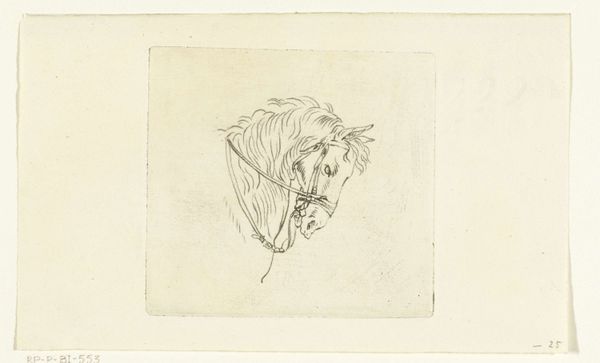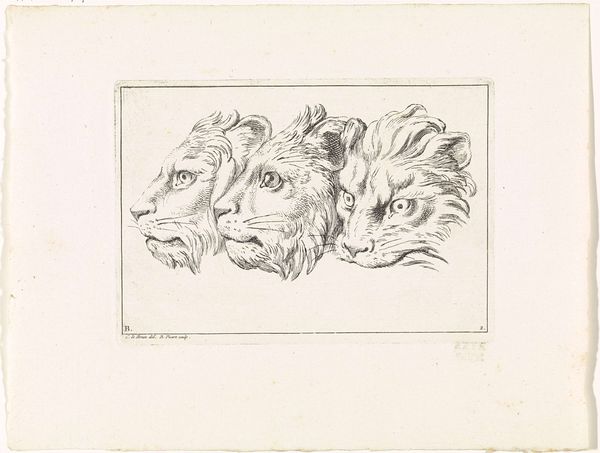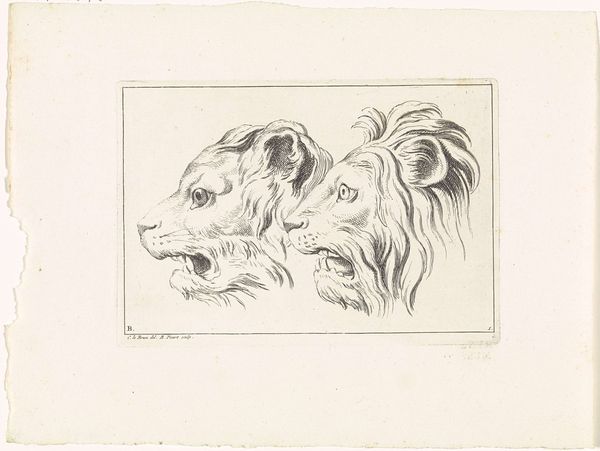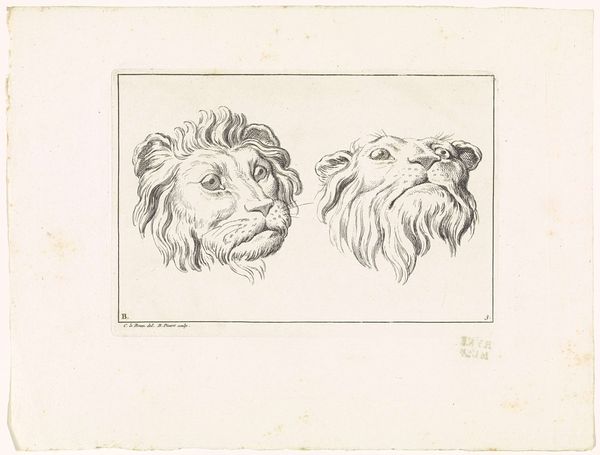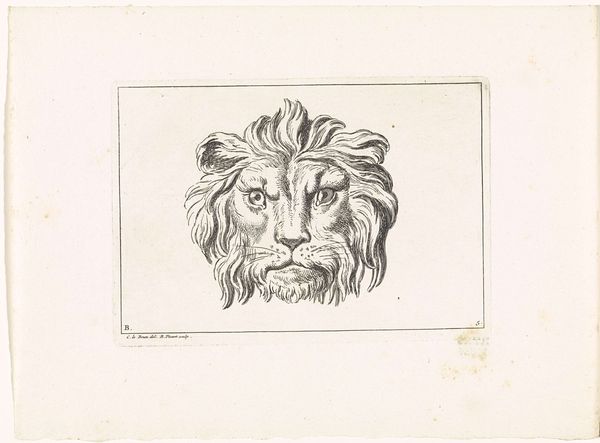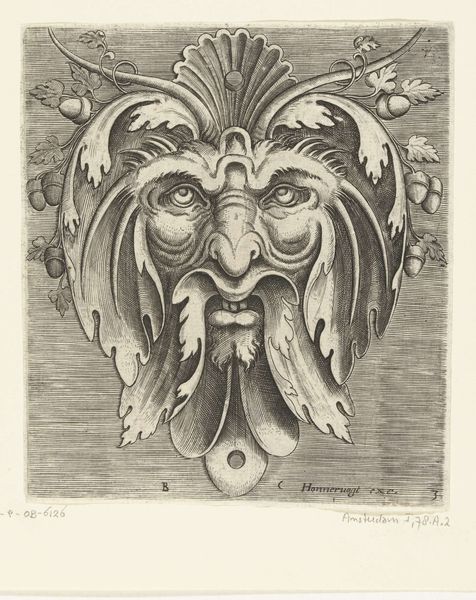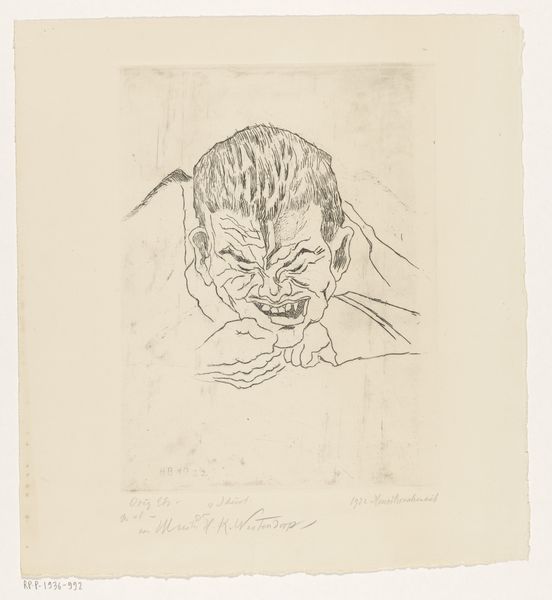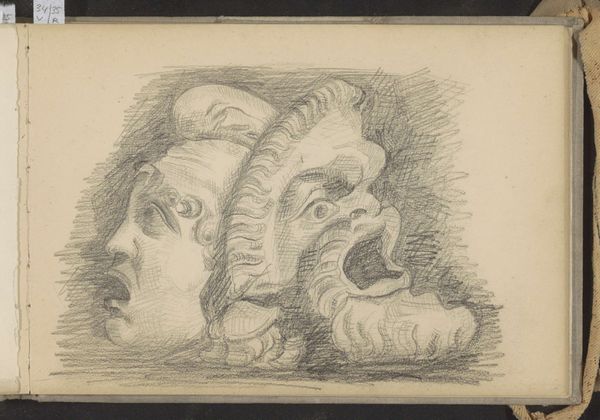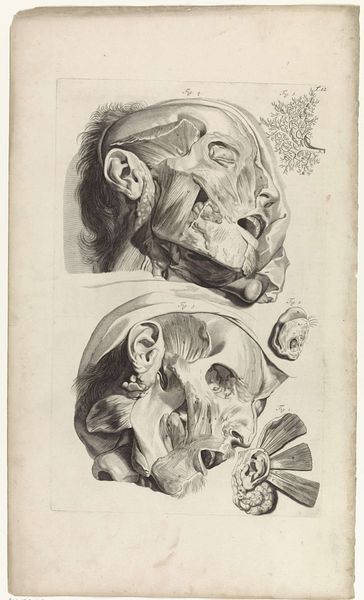
drawing, print, ink, engraving
#
portrait
#
drawing
#
comic strip sketch
#
quirky sketch
#
baroque
#
animal
# print
#
pen illustration
#
pen sketch
#
personal sketchbook
#
ink
#
ink drawing experimentation
#
pen-ink sketch
#
sketchbook drawing
#
history-painting
#
storyboard and sketchbook work
#
sketchbook art
#
engraving
Dimensions: height 120 mm, width 175 mm
Copyright: Rijks Museum: Open Domain
Bernard Picart made this print, "Twee leeuwenkoppen," or "Two Lion Heads," sometime between 1696 and 1733 using etching techniques. Picart lived during a time when Europe was expanding its global reach through colonialism and trade. Animals like lions were often used as symbols of power and exoticism, reflecting Europe's relationship with the world. In this print, we see two different lion heads, each with its unique expression. One has a more direct, fierce gaze, while the other appears almost cunning. What is Picart trying to convey by presenting these contrasting images side by side? It's tempting to think about how these images played into the societal roles of power and aggression. The print invites us to consider how animals are used to project human qualities and desires. Does Picart simply reflect the existing stereotypes, or does he offer a subtle critique of the power dynamics they represent?
Comments
No comments
Be the first to comment and join the conversation on the ultimate creative platform.

